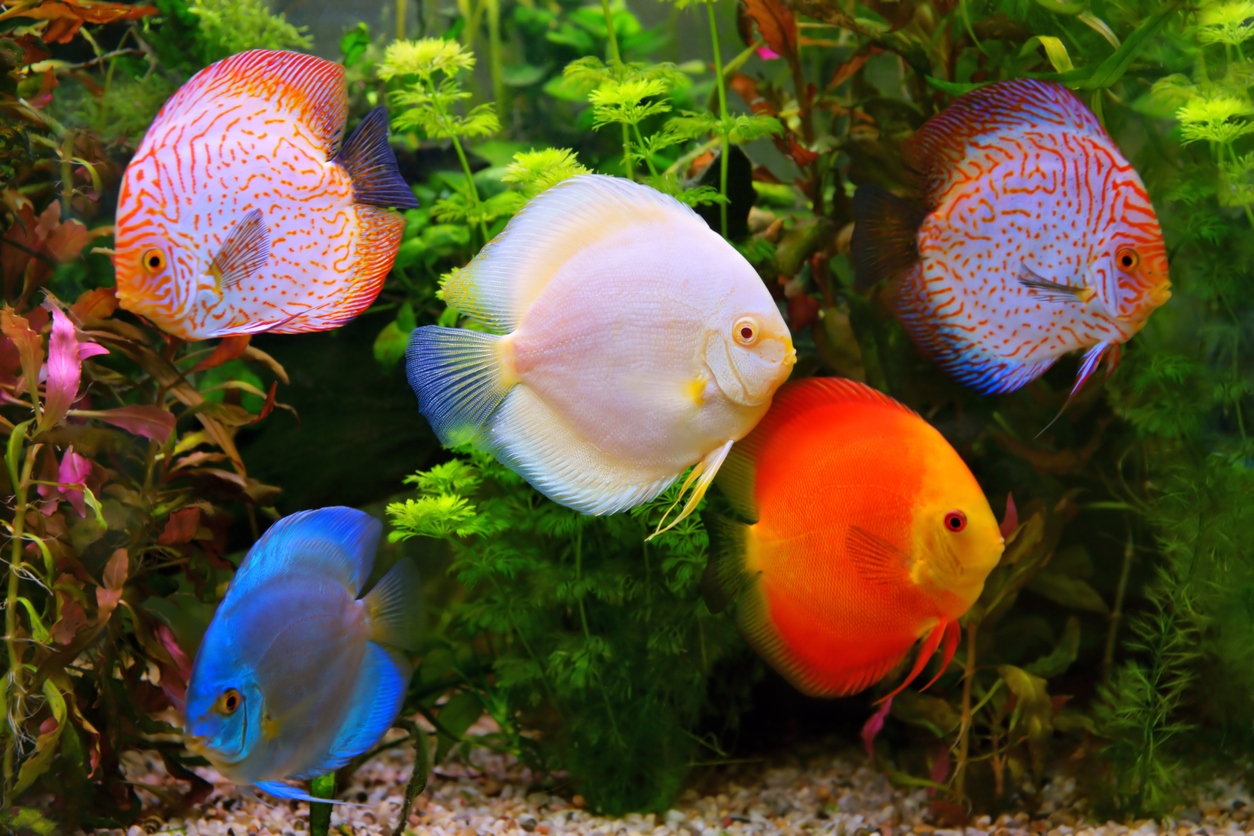
Part of the Symphysodon genus of fish, the discus is known for its incredibly vibrant and diverse colouration – there’s no wonder it’s often referred to as the King of the Aquarium! Here at Blue Planet Aquarium you’ll find our very own discus for you to discover and see with your own eyes, but before you visit, let’s learn a little more about this tropical fish.
What is a discus fish?
The discus is a fascinating species, but did you know that it’s actually part of the cichlid family? Cichlids are one of the most diverse families of fish (Cichlidae), and you can see them here at Blue Planet Aquarium too!
There are thought to be three different species of discus, including the blue discus (Symphysodon aequifasciatus), red discus (Symphysodon discus) and green discus (Symphysodon tarzoo). They are characterised by a flat body which gives it its name, although they are sometimes referred to as the pompadour fish.
Where do discus live?
Discus fish are native to the Amazon Basin in South America, preferring the deep slow-moving waters, tributaries and floodplains found in the Amazon River, such as the Rio Negro.
They will typically congregate near fallen trees at the shore because of the constant flooding, as this provides a continuous flow of freshwater. Living in small groups, they will thrive among submerged tree roots, vegetation and aquatic grass.
Things you should know about discus
These beautiful fish are fascinating, with some interesting characteristics and behaviour that you should know!
While they are classified according to colouration, discus can display a multitude of unique patterns. Discus have even been known to change colour, particularly when stressed. They can turn dark in colour and develop vertical bars.
Discus’ mating season is influenced by changes in flood levels, with spawning taking place as the water levels begin to rise. Eggs hatch after just 3-4 days. While many species of fish will leave their young to fend for themselves from birth, the discus will feed their fry for the first few weeks of life. They do this by secreting mucus that their offspring consumes, until they are big enough to forage for themselves.
A discus’ diet typically consists of algae and other plant material, although they will also eat some small invertebrates like worms and crustaceans.
The discus is known as a schooling fish, which means groups will swim together in a coordinated manner.
Come and see us!
You can come and see discus fish for yourself right here at Blue Planet Aquarium, in our Flooded Forest exhibit. Here you will be transported to the rivers of the Amazon Forest and learn more about this incredibly rich ecosystem, as well as catching glimpses of our many other species such as stingrays and catfish.
Type
Fish
What do they eat?
Plant material and small invertebrates
Size
15cm on average
Water Type
Freshwater
Where are we?
Amazon Basin
